How To Make Canvas Art
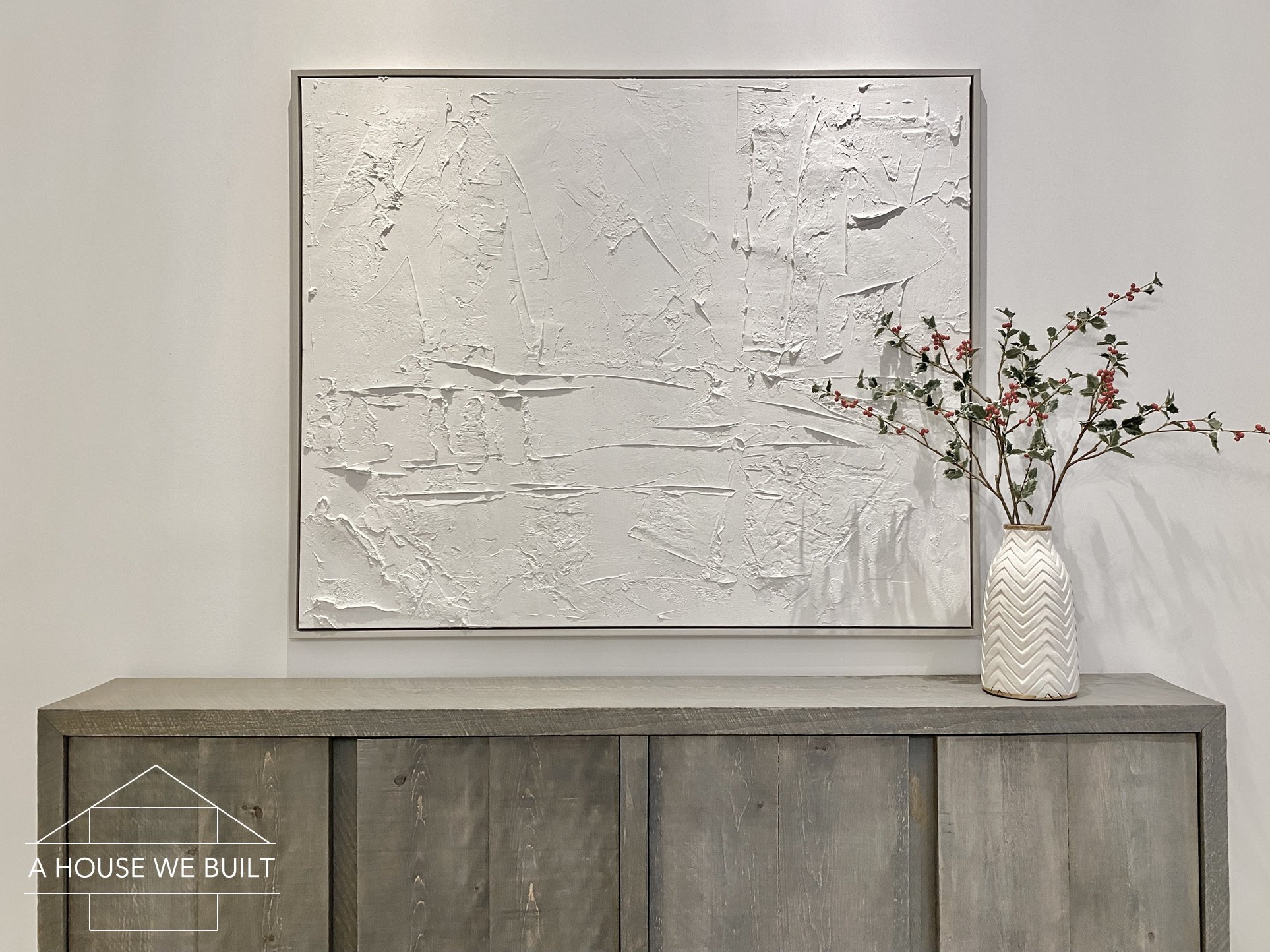
We made a huge textured canvas art piece for our dining room and I'm going to show you how we did it!
I made everything completely from scratch meaning I built my own canvas frame, I did my own art, and I made the floating frame but you can also skip part of these by buying a canvas frame or skipping the floating frame, so I've separated the tutorial into 3 steps so you can skip down to any step you want.
But if you're not into DIY or just not feeling super artistic, here are similar art pieces you can buy ready-made: McGee & Co (rectangular) | McGee & Co (square) | Crate & Barrel | Anthropologie | Pottery Barn.
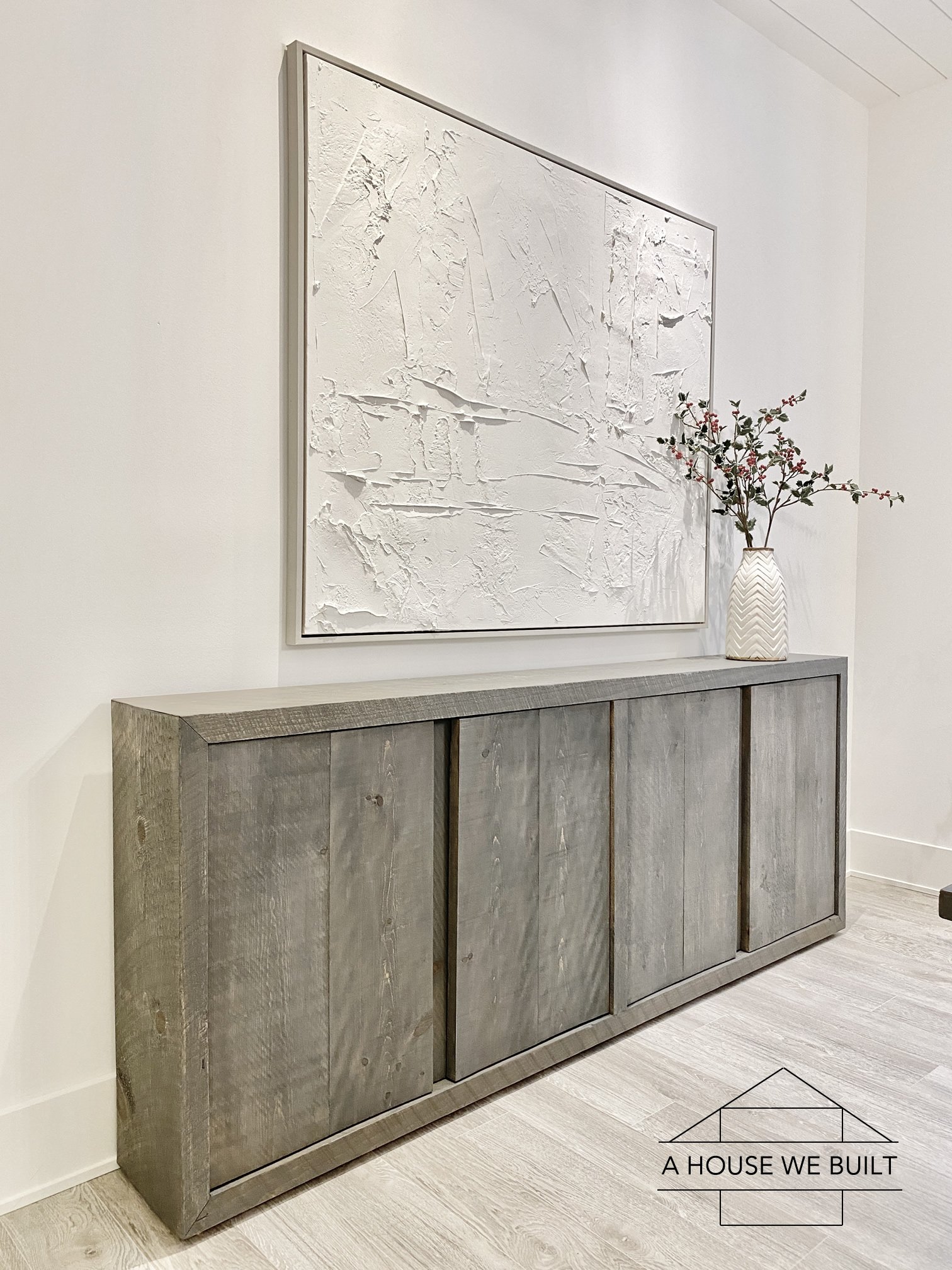
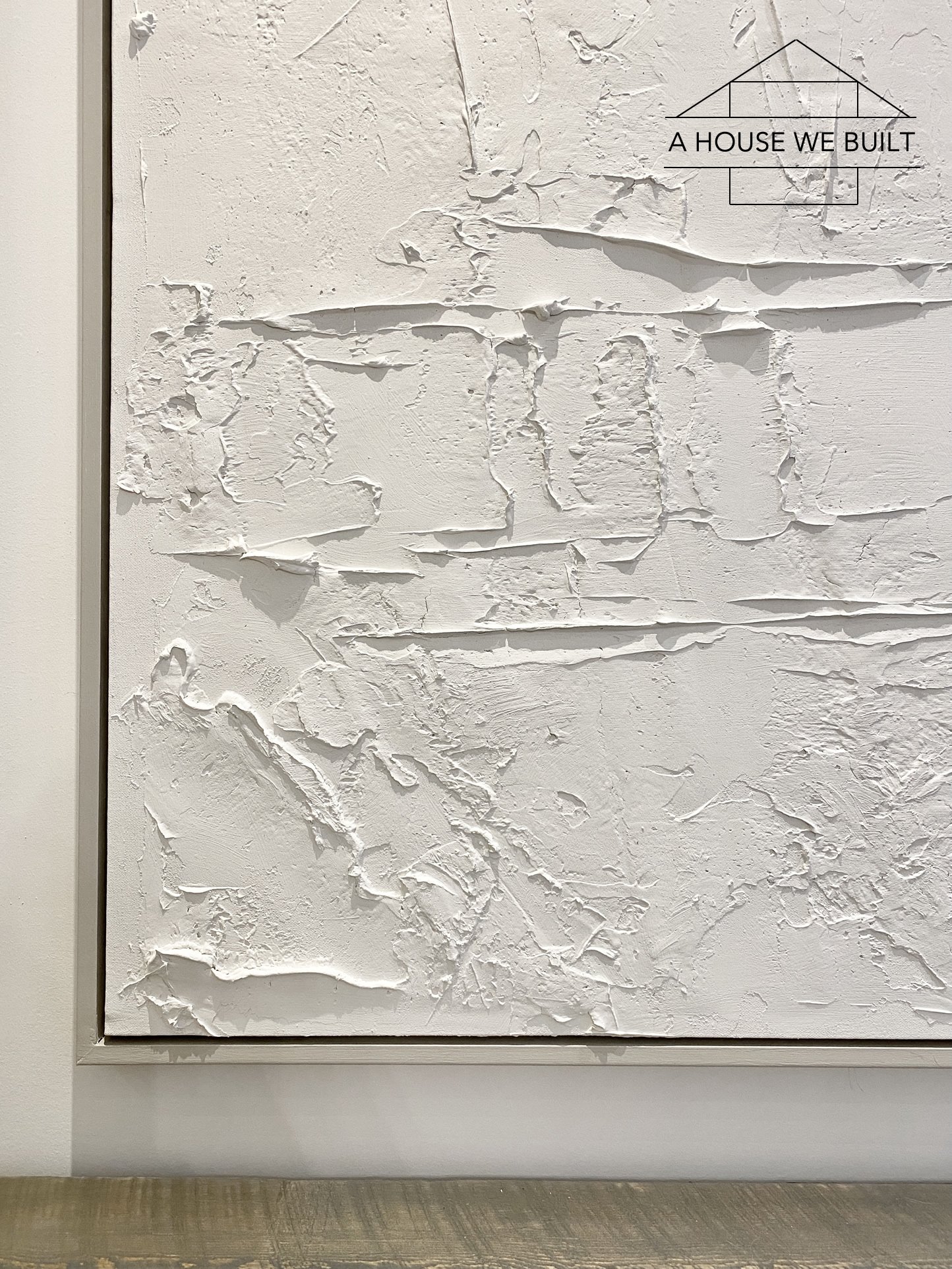
Ok so I literally made everything out of scrap wood and unused materials that were lying around my house but in case you don't have these things on hand, I've tried to find sources for as much as I could.
STEP 1: HOW TO MAKE A CANVAS FRAME
Note: if you don't want to make your own canvas from scratch, you can totally just buy one. I actually couldn't find one that was the size I wanted (5′ x 4′), but depending on what size art you want to make, it may be easier to just buy one. Here are a few that are very similar to the ones I made:
- Canvas & frame set: Michaels | Amazon (largest I could find)
If you want to make your frame though, you'll need these materials:
- 1×2 wood: Home Depot (My canvas was 5'x4′ so I needed 3 for the frame + 1 for supports)
- Cotton canvas fabric: I got mine from a small fabric supply store a long time ago but I think this is the same or similar: Amazon | Amazon.
Tools:
- Miter saw: Home Depot
- Heavy duty staple gun: Home Depot
- Locking pliers: Home Depot
- Screwdriver & screws if your canvas is large
- Nailer & nails if your canvas is smaller
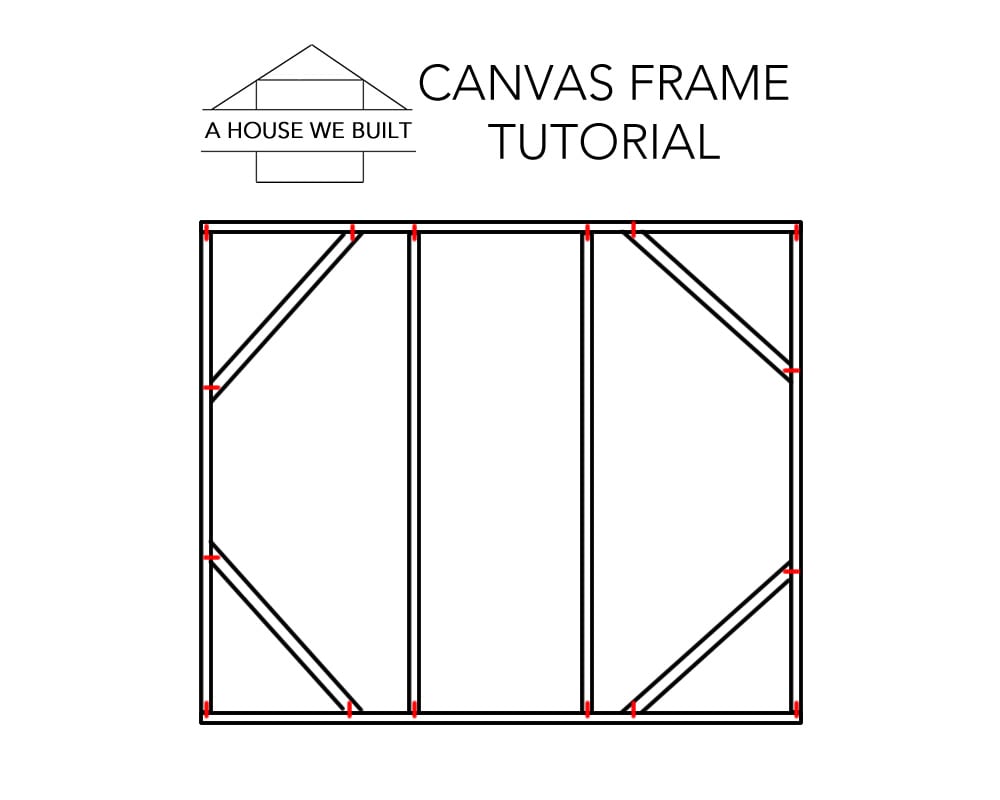
Instructions for making the frame:
- Determine how large you want your canvas to be. I wanted mine to be about 5ft x 4ft so I cut two 1x2s down to 60″ each and another one in half (two 48″ pieces) and used that for the exterior frame. If you have a small frame, then you can get away with just little diagonal support pieces in the corners, but if your frame is as large as mine or larger, then you'll also need additional support pieces so I also cut an additional 1×2 in half to create two more support pieces. Then I used the cut-offs from the two 1x2s that I got the 60″ pieces from to create diagonal support pieces. The exact sizes don't really matter as long as they functionally support the frame. So in total I needed:
– 2 x 60″ lengths
– 4 x 48″ lengths
– 4 x diagonal support pieces with 45* corners so that it could brace against the exterior frame - Using pilot holes & screws, assemble your frame starting with the 4 exterior frame pieces, then interior vertical supports, and finally the diagonal supports.
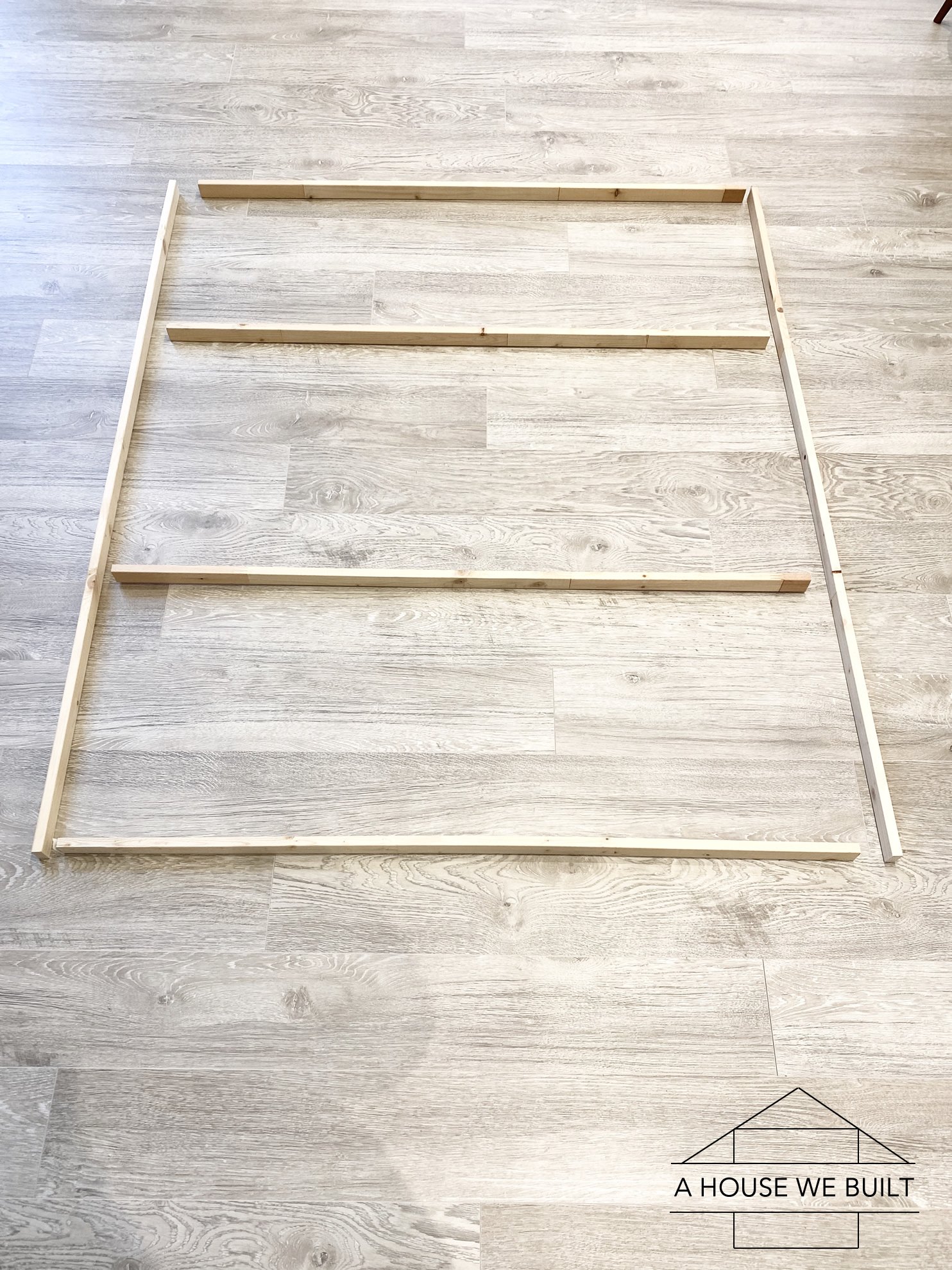
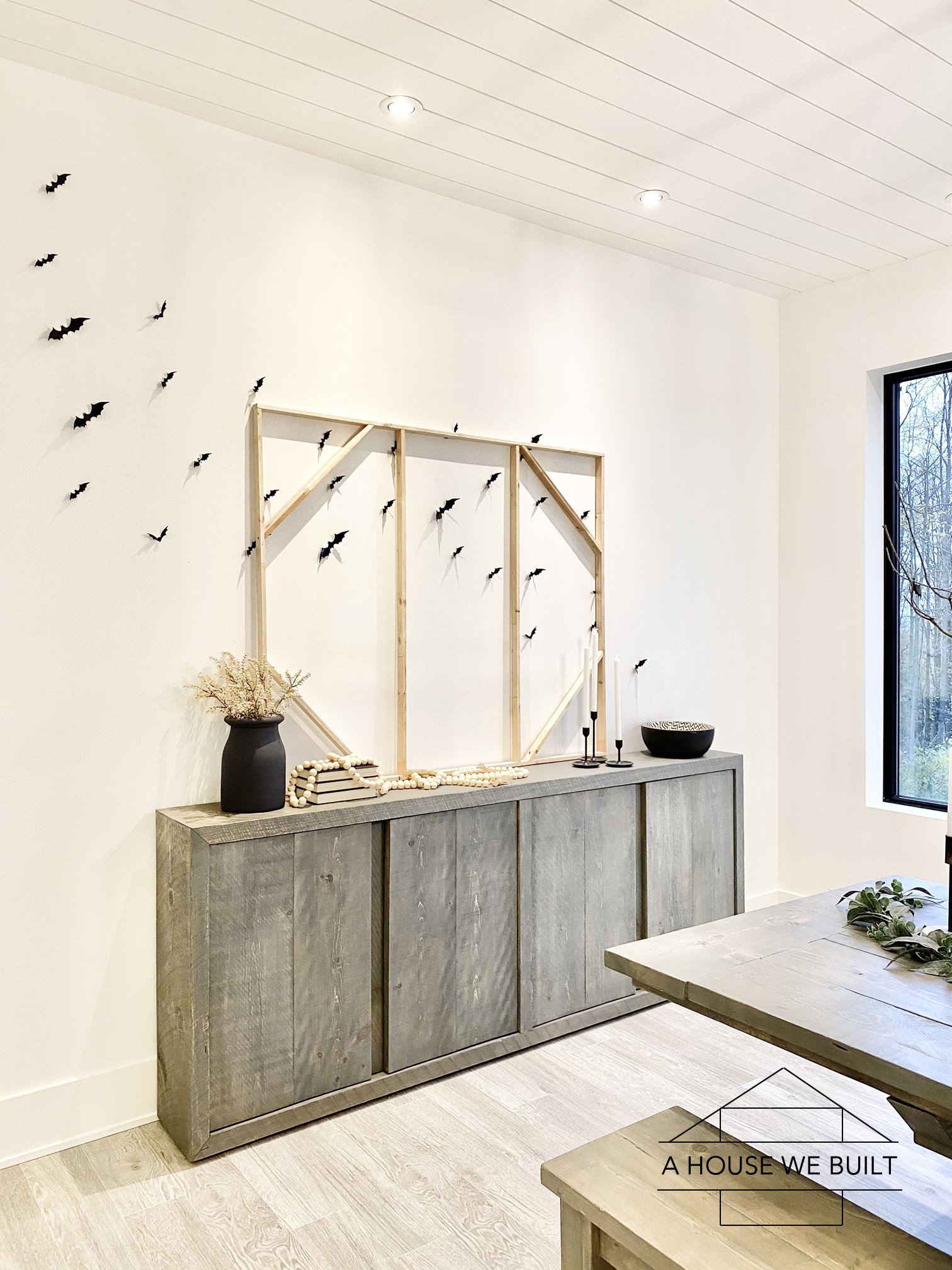
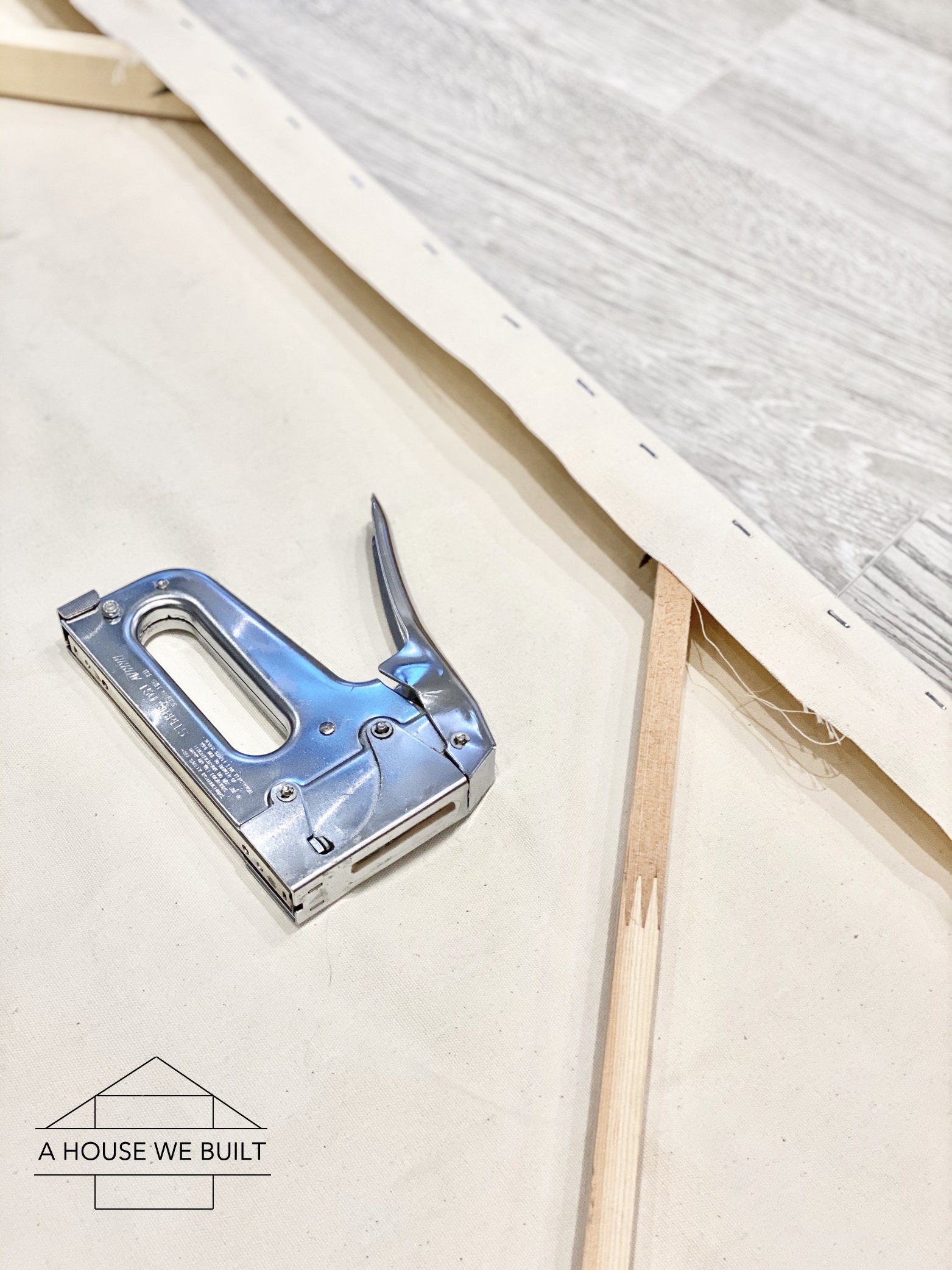
Instructions for attaching the canvas fabric:
- The basic idea here is that you're going to wrap the canvas over the front of the frame and staple it to the back. But you have to pull the canvas tight or you'll end up with ripples and nobody wants that. So here's how we did ours: First, we smoothed the canvas out to get rid of any fold lines, then placed the frame over it and secure one side all the way, stapling it to the wood every 1-2 inches, but be sure to stop about 2″ before the corners because you'll do the corners at the end.
- Then continue on to secure the other sides with more staples. We always would start in the center and work our way to the corners. We used locking plyers to help pull the canvas tight – but be careful because you can rip the canvas if you pull too tight.
- Finally do the corners. I've shown a picture to kinda show how I folded it. There's no right or wrong way to do it – just make it look neat and well tucked and give it a couple extra staples.
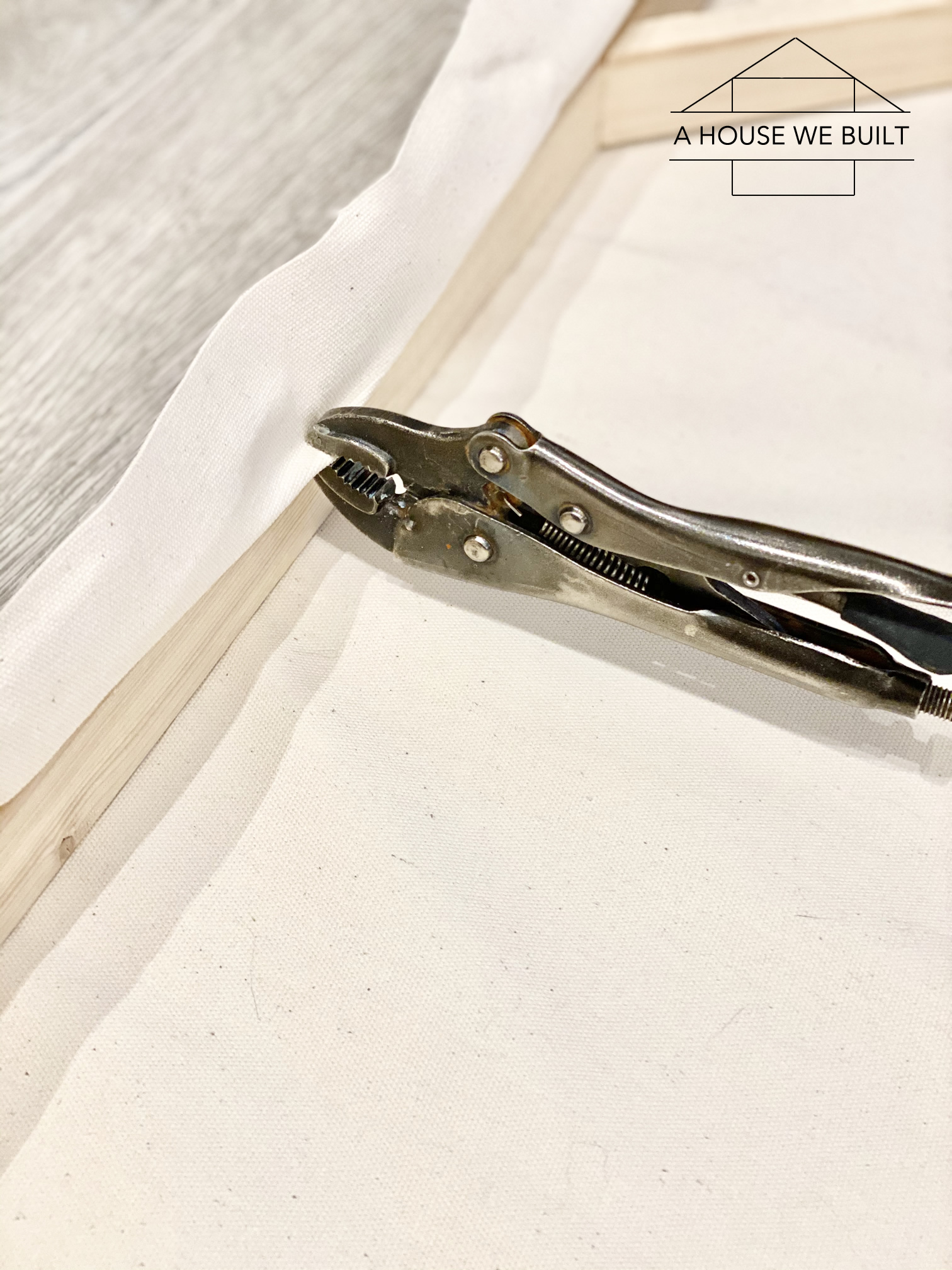
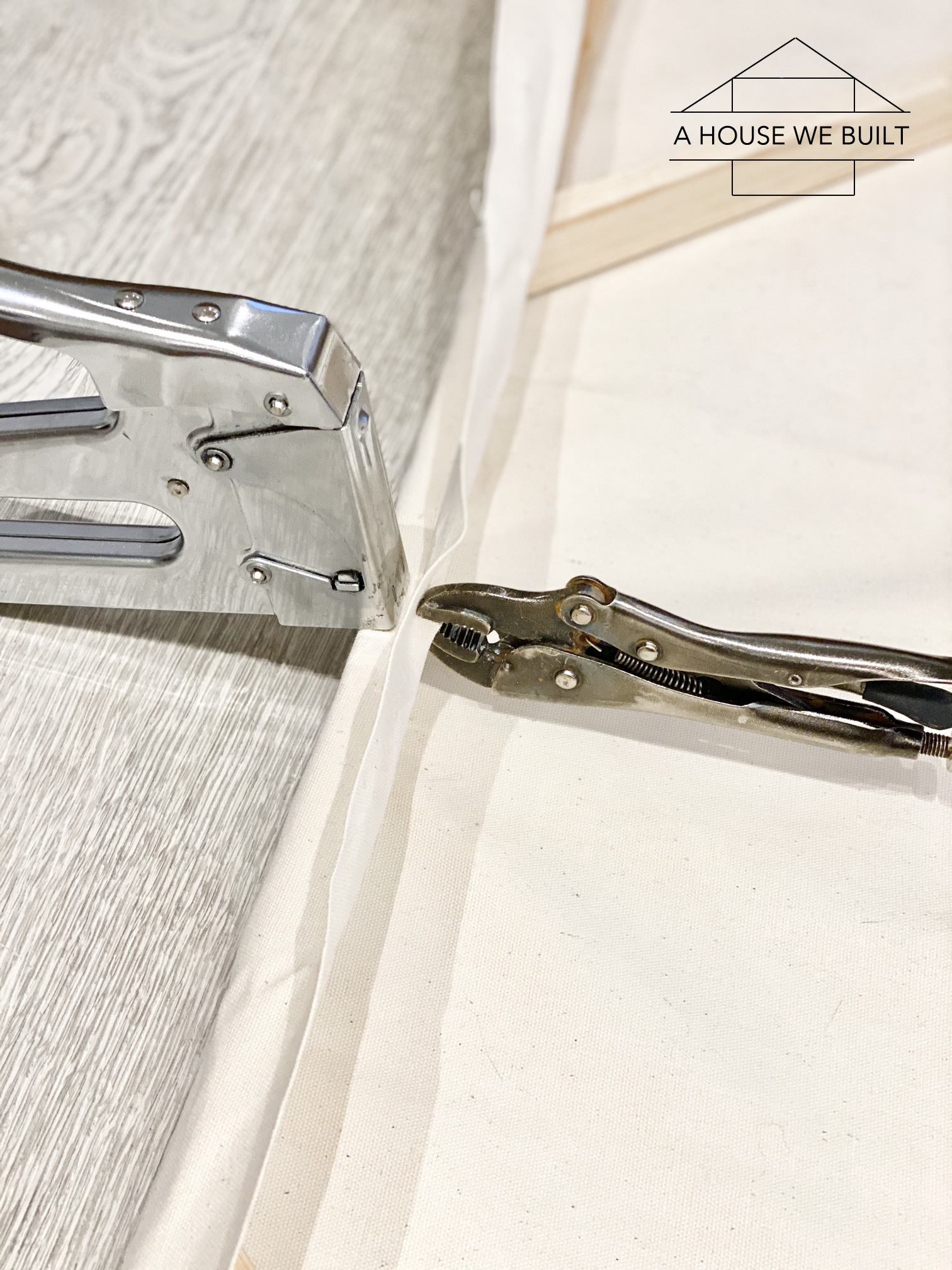
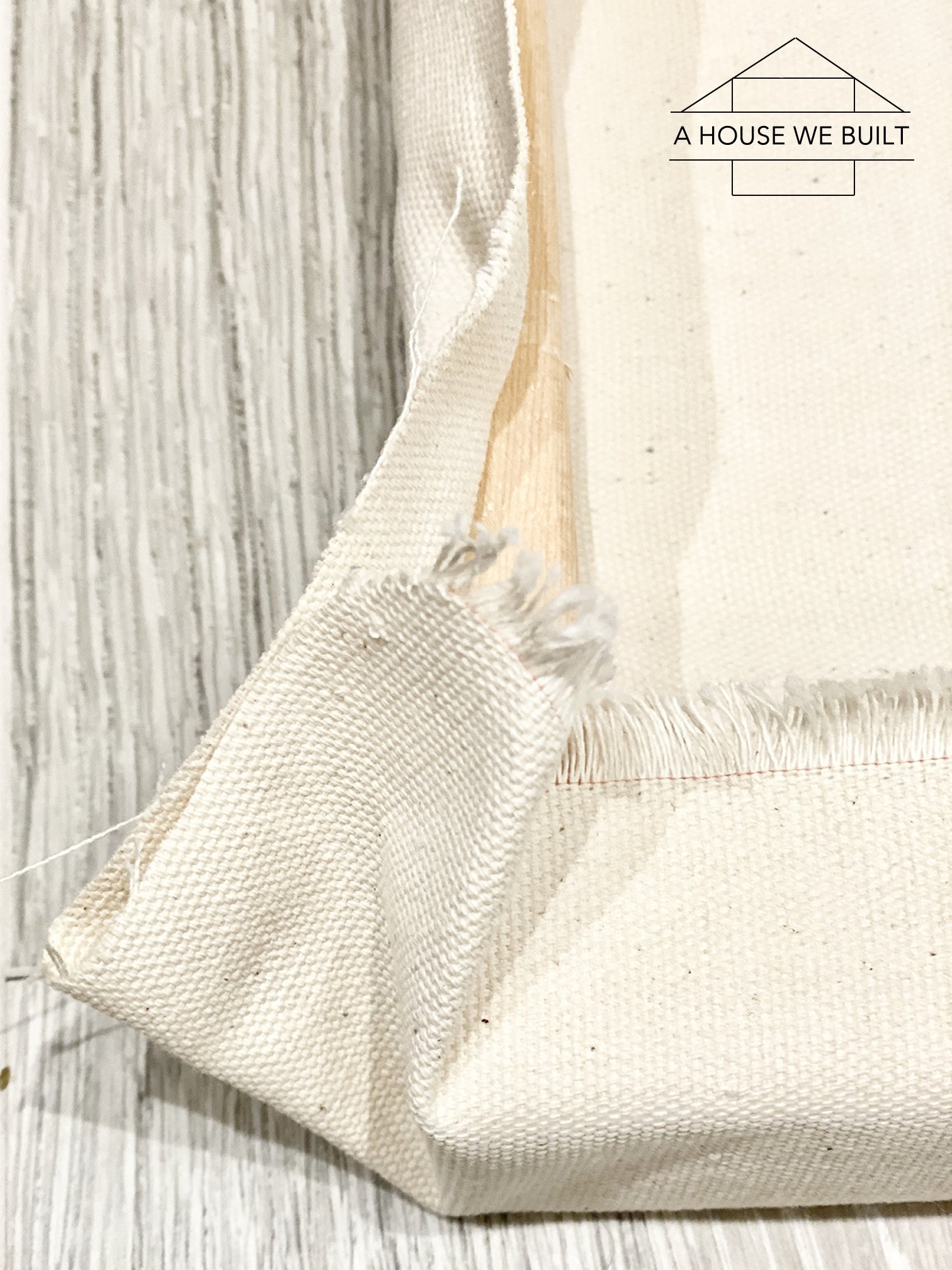
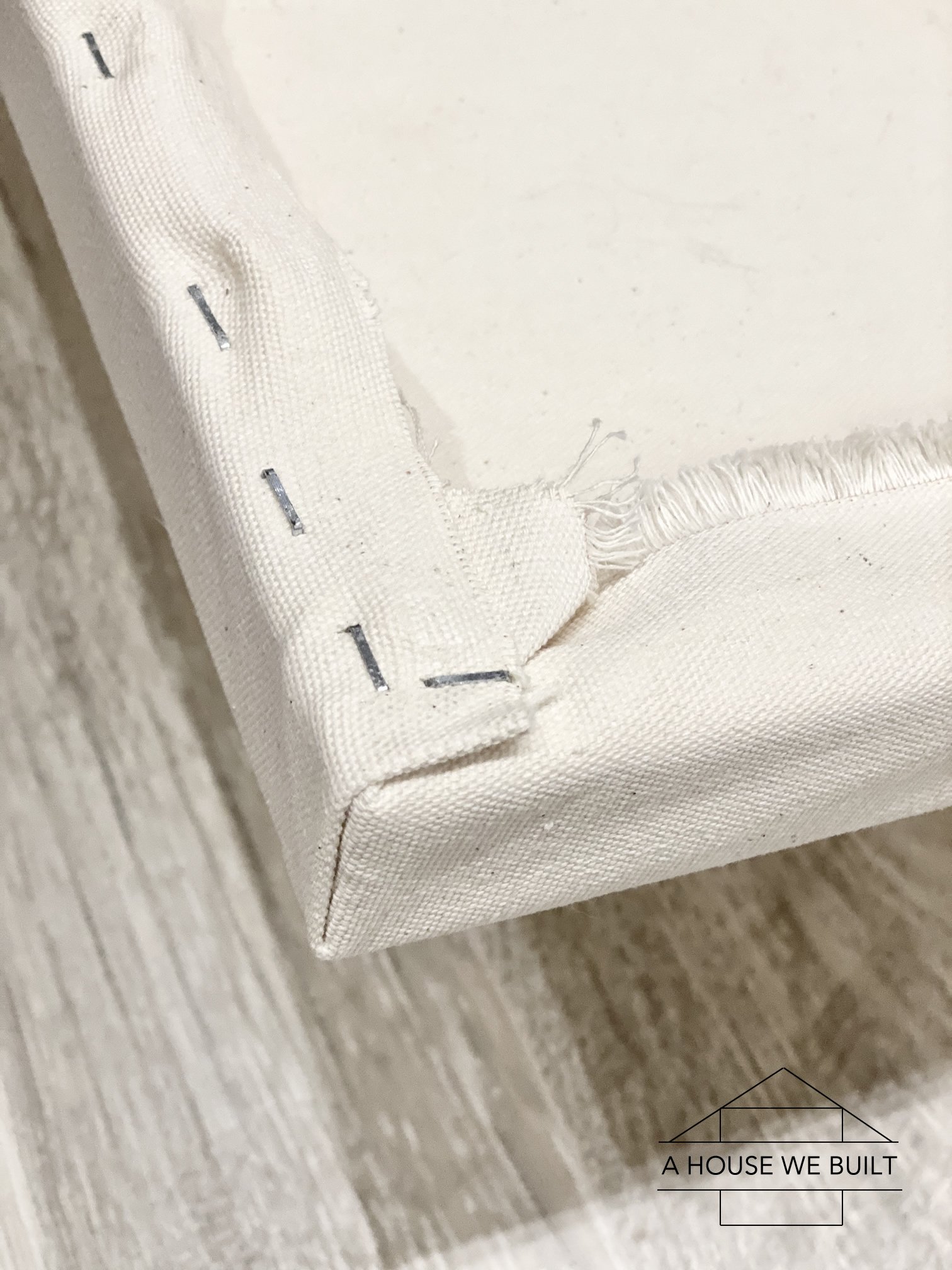
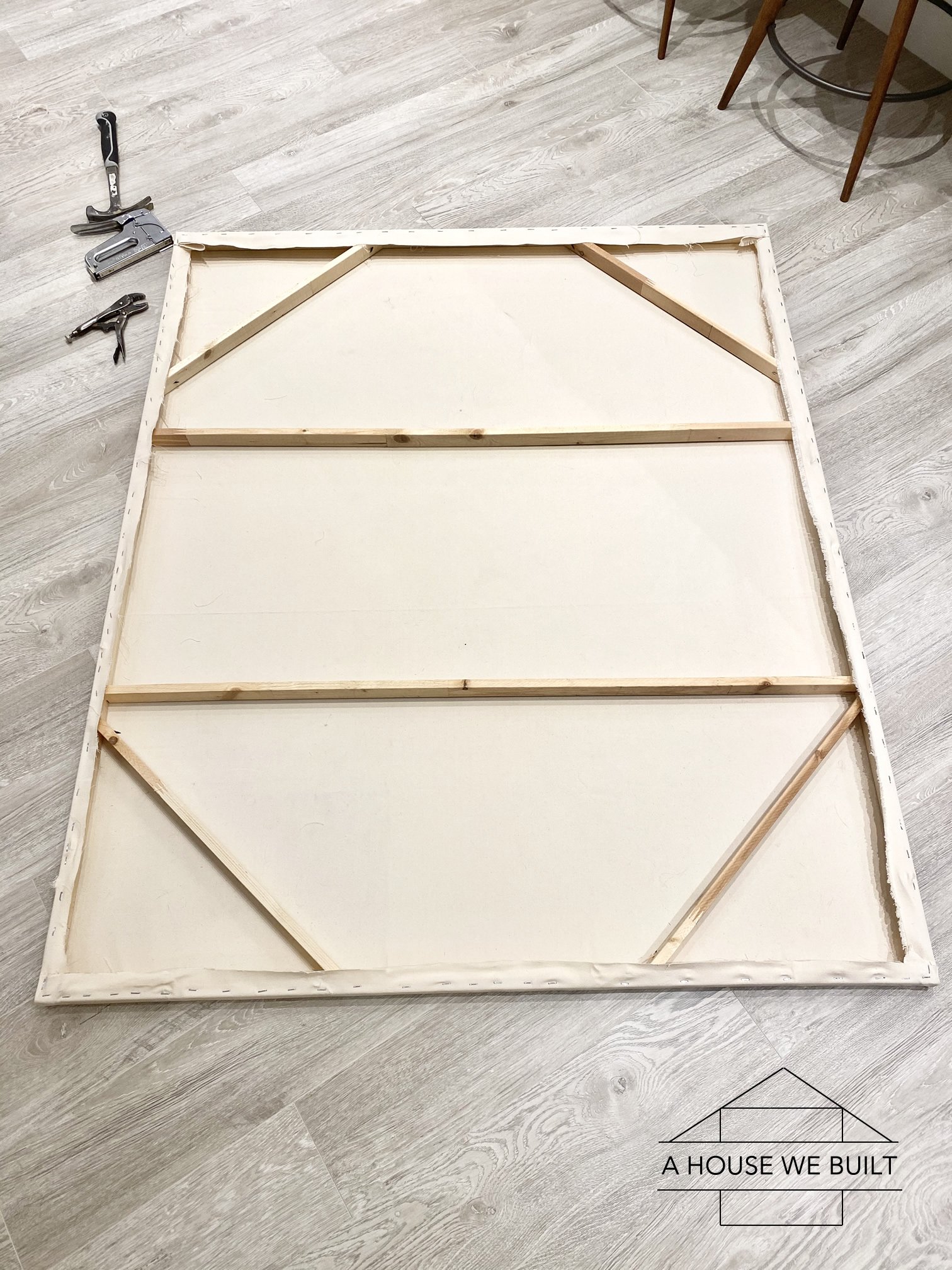
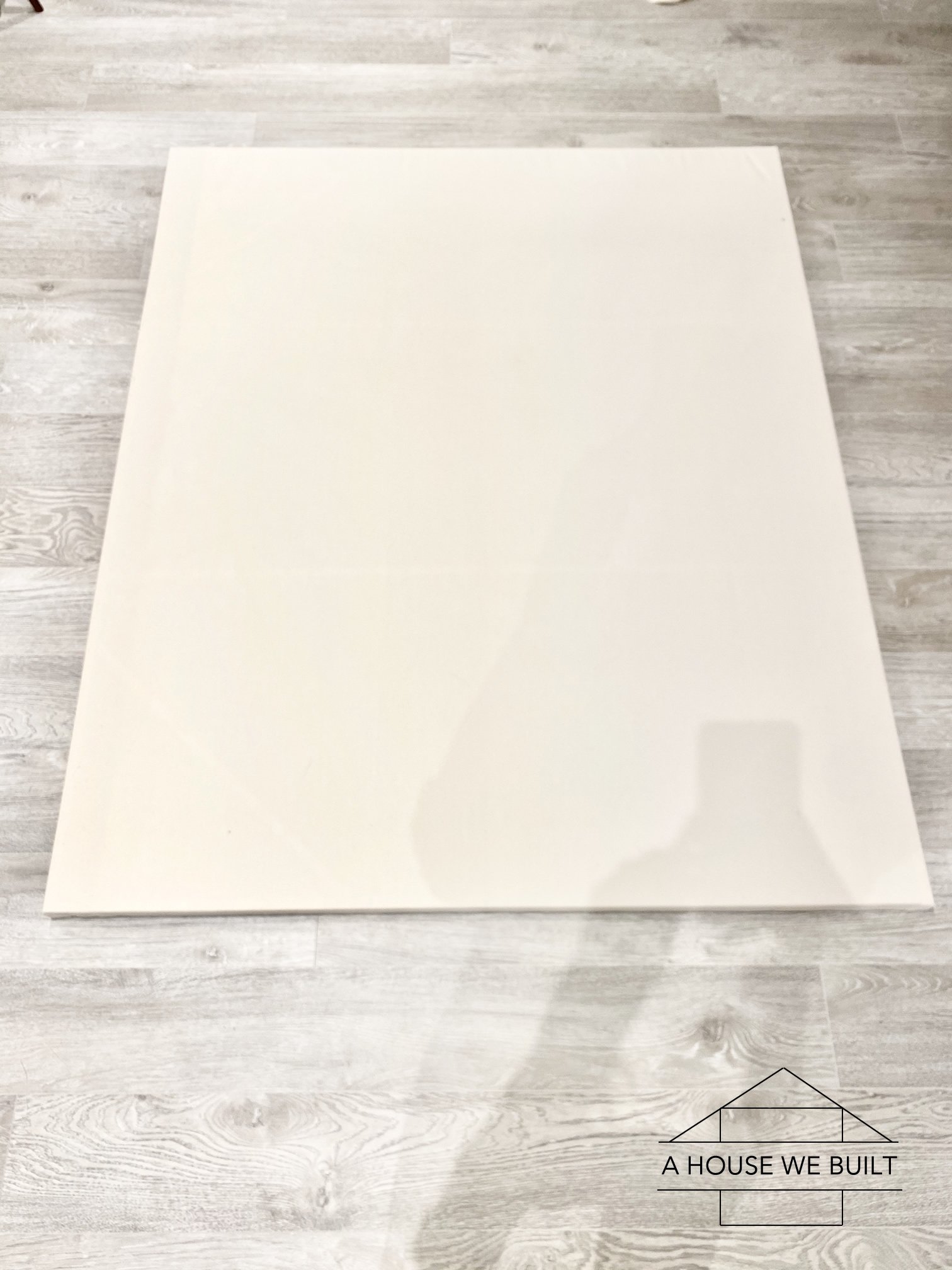
STEP 2: HOW TO MAKE DRYWALL MUD / JOINT COMPOUND ART
Materials:
- Joint compound/drywall mud: Home Depot (I always use this dust control one)
- Paint (I used BM Simply White in matte)
Tools:
- Trowels/taping knives. I used these two sizes: Home Depot / Amazon | Home Depot / Amazon
- Paint brush
Instructions for mud art:
- Before you begin texturing your canvas, you'll need to paint the entire canvas with any type of house paint you have on hand to essentially seal the canvas fabric. I saw that pros do this with something called "gesso" (?) but I figured that house paint would probably function the same and it worked for me. Basically the way I understand it is that the idea is to make it so that the fabric is a little stronger base to hold your mud and so that the moisture won't sink into it as much. Anyhoo, just paint the whole thing and let it dry fully before starting anything else. I used matte wall paint and a paint brush – really making sure that I got the paint into the weave of the fabric.
- Once your painted canvas is dry, it's time to texture! There are no rules to this process. Just gloop a bunch of drywall mud onto the canvas and shape it until you're happy with how it looks. [Tip #1: if you've never worked with drywall mud before, I would suggest practicing a little on a scrap board or something just so you get a feel for it. I've mudded and taped a ton of drywall at this point so I'm really familiar with how the mud goes on and what textures to look for but if I wasn't, I think I would have liked to practice a little first. Tip #2: if you add a little water, you can create different consistencies in the mud, which in turn will look a little different as you smear it so play around with that. Tip #3: have a few different tools on hand. I actually just used my drywall taping knife and trowel so it doesn't have to be fancy but I suggest at least two different sizes of tools.]
- Allow this to dry FULLY, especially if you have some thicker mud sections. I let mine dry for about 5 days before moving to the next step. Left pic below is after about 1 day of drying.
- After it's fully dried, you may notice that sections of the mud have cracked. Don't worry, this is normal. Just go in with a gloved hand and a little bit of mud and use your finger to *gently* repair the cracks by adding a small amount of more mud over the cracks (also if the crack is larger, fill in the gap with mud) but smooth it back over so you don't lose the shape of the texture and lines you created. I did this in sections all over my entire canvas. The idea here is that you want your mud to be firmly secured to your canvas and if there are cracks, I'd be worried it would just crack and fall off once you moved it to a vertical position so I wanted to repair all the cracks to strengthen the overall mud structure. I've shown some before (middle) and after (right) pics below:
- Allow the crack repairs to dry FULLY. I let mine dry for 2 days.
- Once dry, seal everything by painting over it with wall paint. I used the same matte paint that I used to seal the canvas prior to applying the mud. Paint it by hand with a paintbrush and CAREFULLY go over everything – like get right into any cracks and gently go around all the texture. You want to create a seal-coat without hiding any of the more subtle texture so this takes some attention. Also paint down the sides of the canvas too just to really seal it all up.
- Allow this to dry FULLY. I let mine dry for 24 hours.
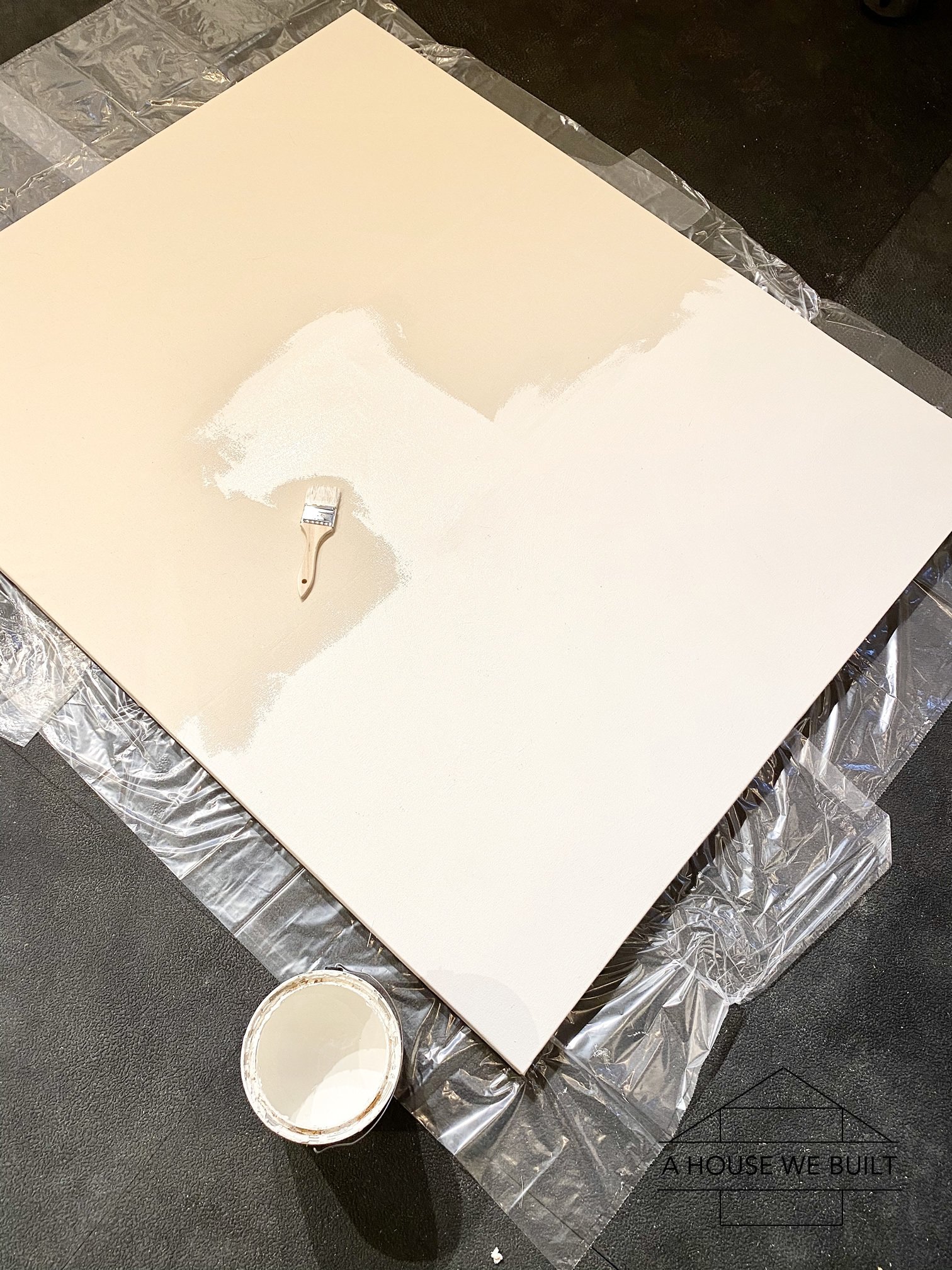
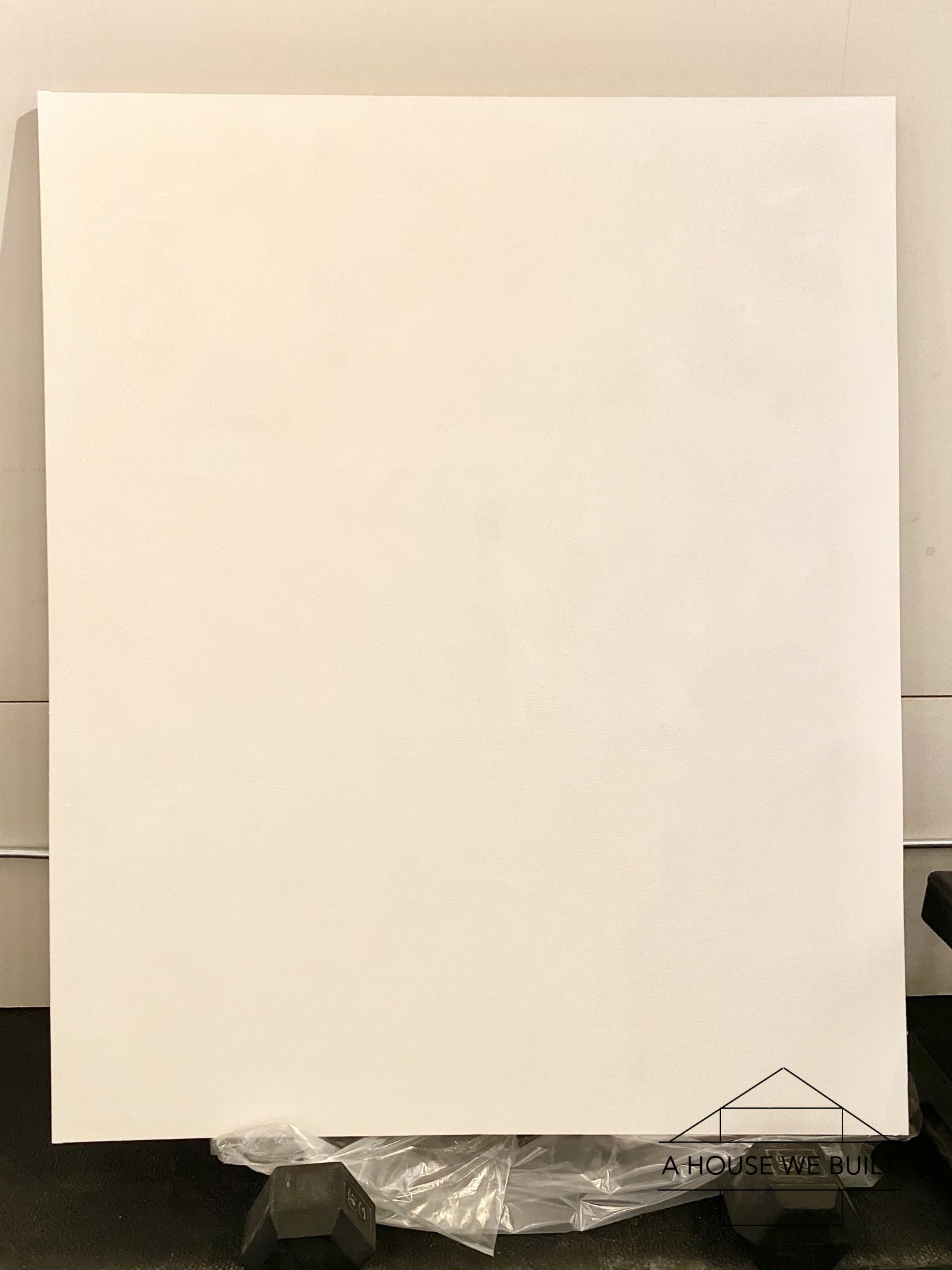
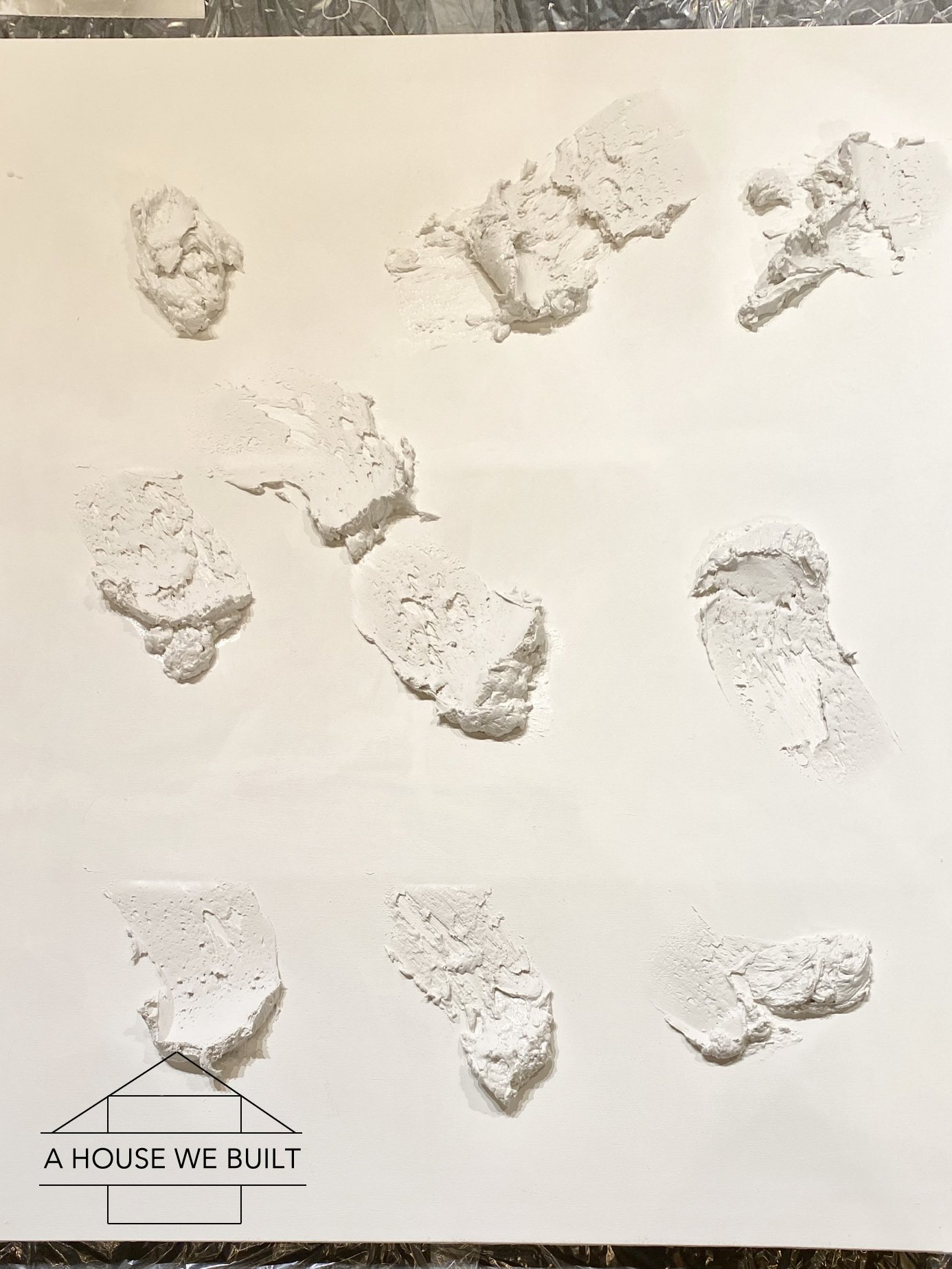
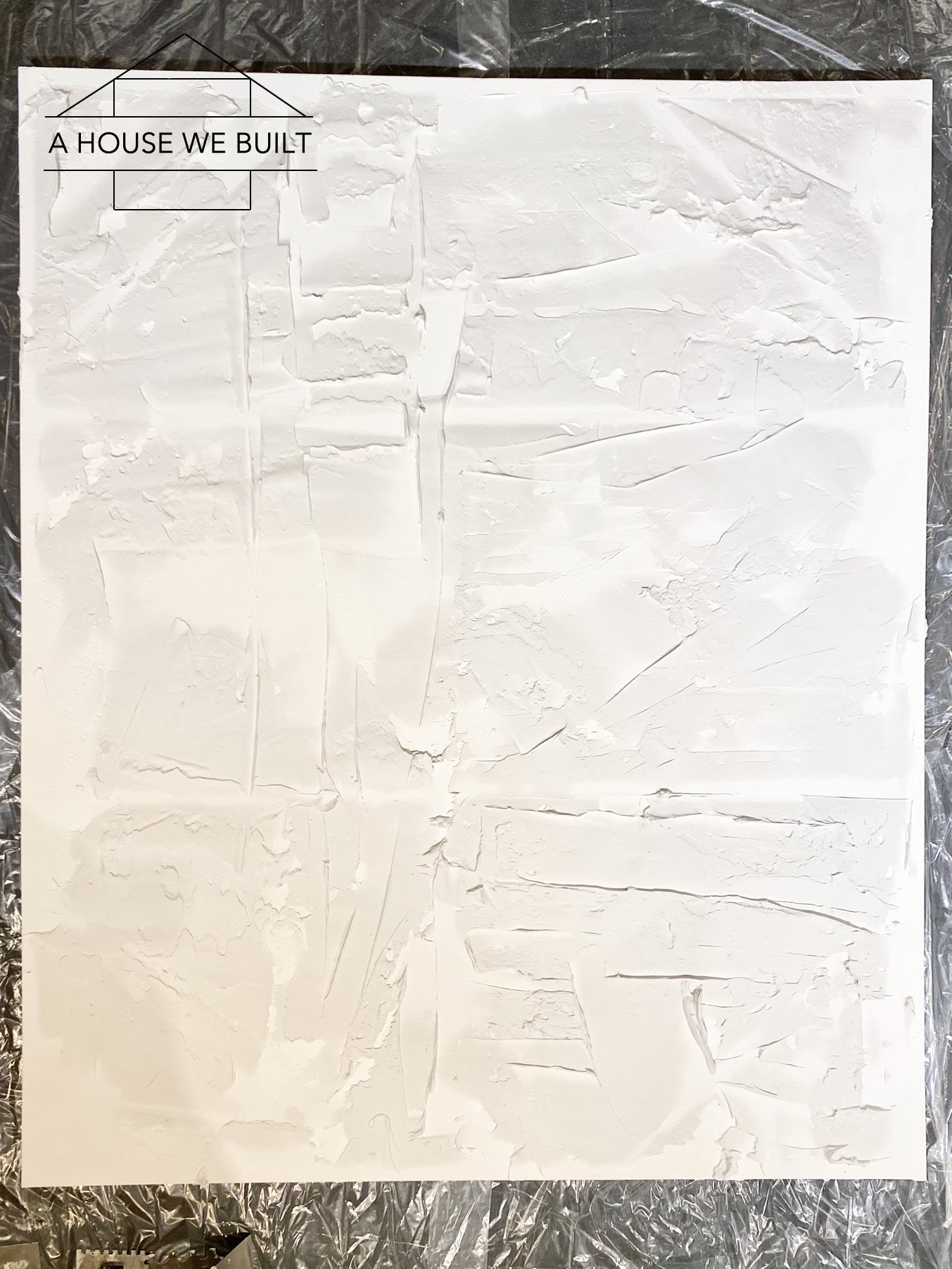
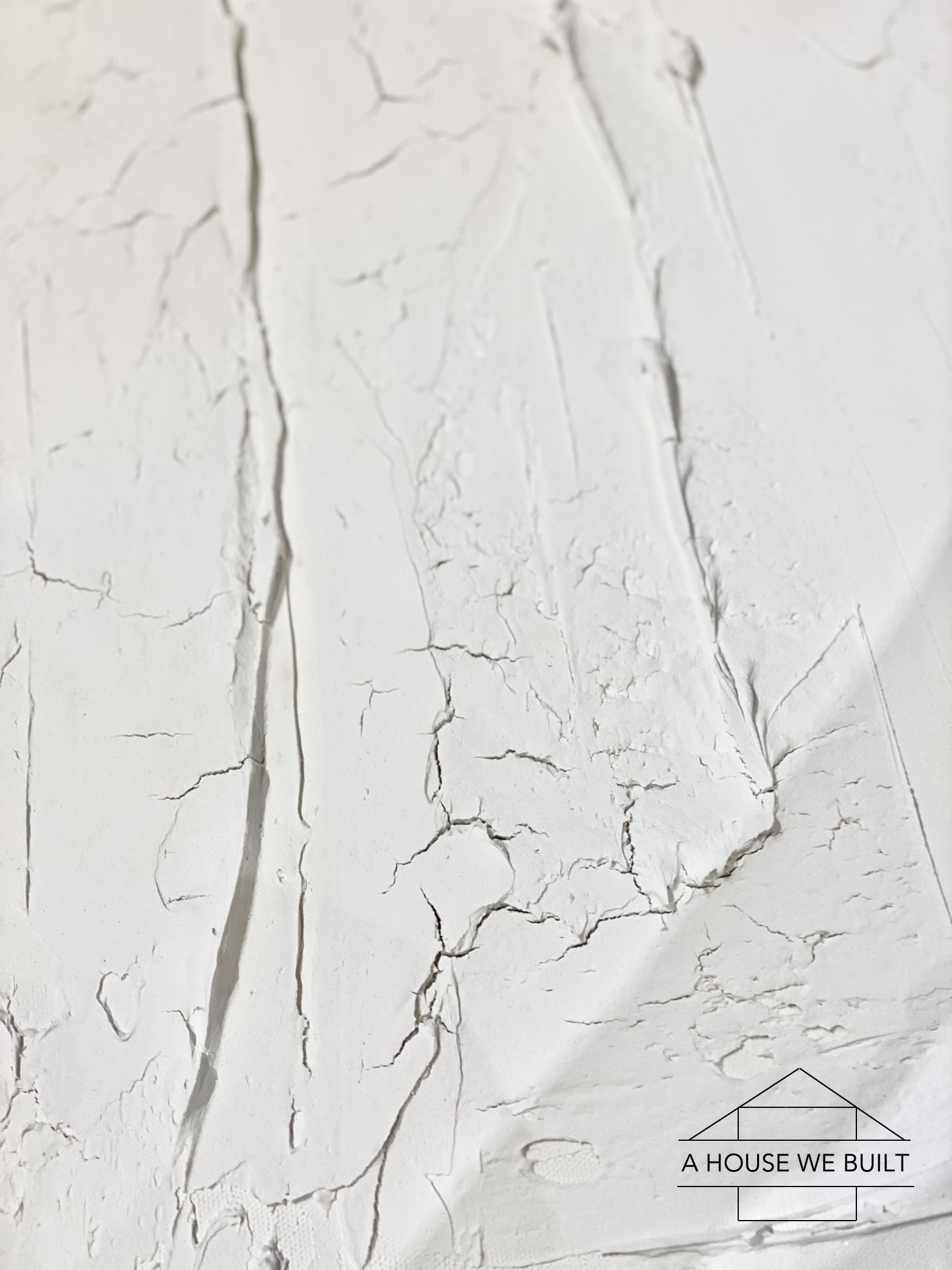
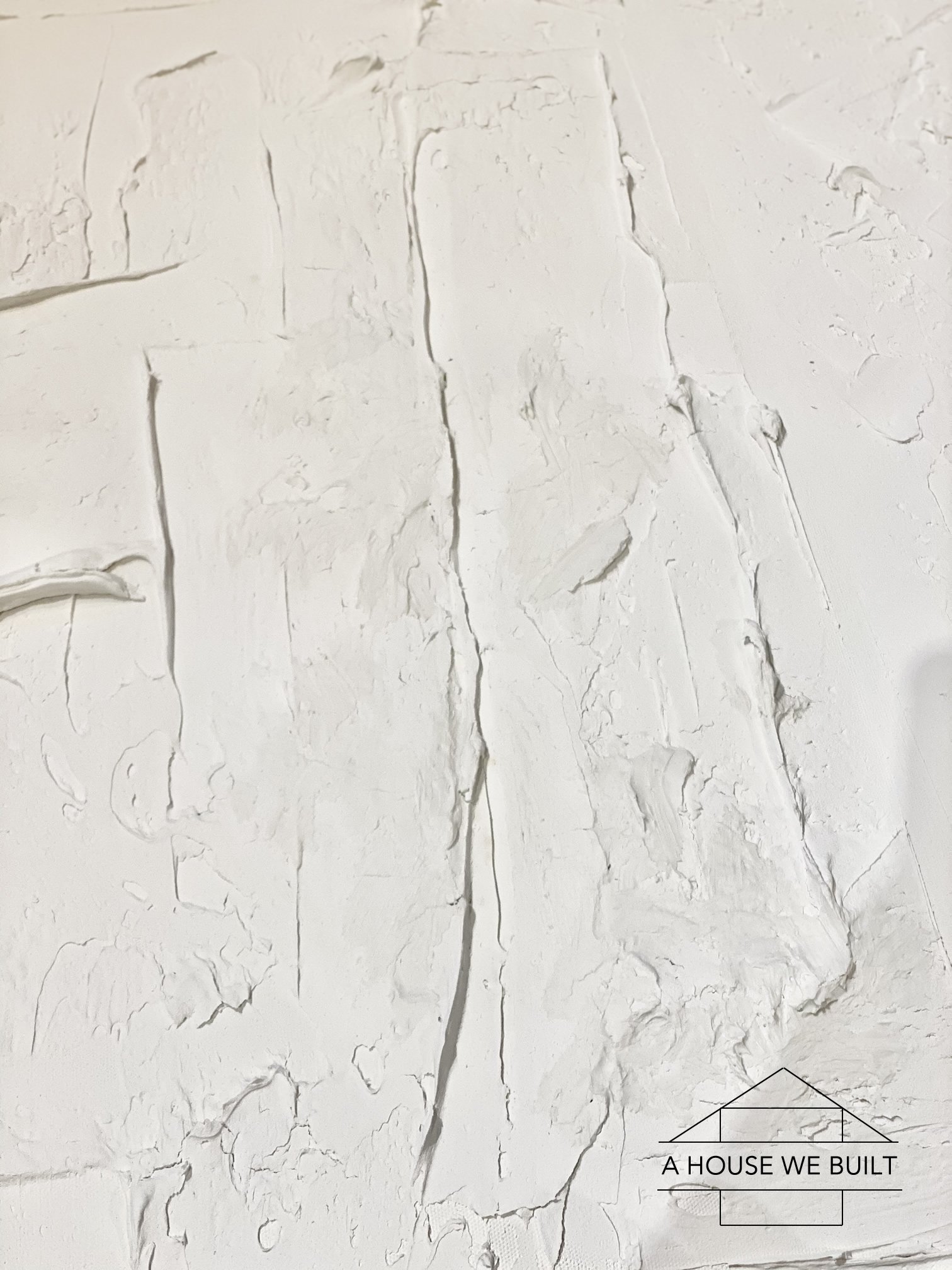
STEP 3: HOW TO MAKE A FLOATING FRAME
Materials:
- 1/4″ strips of any material (I ripped down MDF)
- 1×2 wood (if you plan to stain it) or MDF (I used MDF)
- Paint (I used BM Revere Pewter in Satin) or Stain
Tools:
- Table saw: Home Depot | Amazon (if you need to rip down MDF)
- Nailer: Home Depot (& nails)
- Wood filler
- Sandpaper
Instructions for floating frame:
- Now, obviously this is totally optional and there are many ways to frame art, but if you want to create a floating frame, this is how I did mine: Essentially you need to create a gap (I did a 1/4″ gap) between the canvas and the exterior frame you're going to build. My frame was made from 1×2 (meaning it had a depth of 1.5″ so the way I created the gap was to simply nail a strip of wood that was 1/4″ x 3/4″ between the canvas frame and the exterior frame. I created my strips by ripping down some MDF I had on hand but plywood would work fine or I think some hardware stores might have something already made that could work. There's no rules for this, it just has to be a shallower depth then your frame to create the gap. And it doesn't have to be perfect – the idea is that these strips won't really ever show.
- Then you nail the strips to the canvas frame. I also painted mine a darker gray (black would work too) to accentuate the shadow line but that's optional.
- Then measure & cut 1x2s for your final exterior frame (I mitered my corners but that's optional) and nail them into place. I then wood-filler'ed the seams and once that was dry, I painted it all gray.
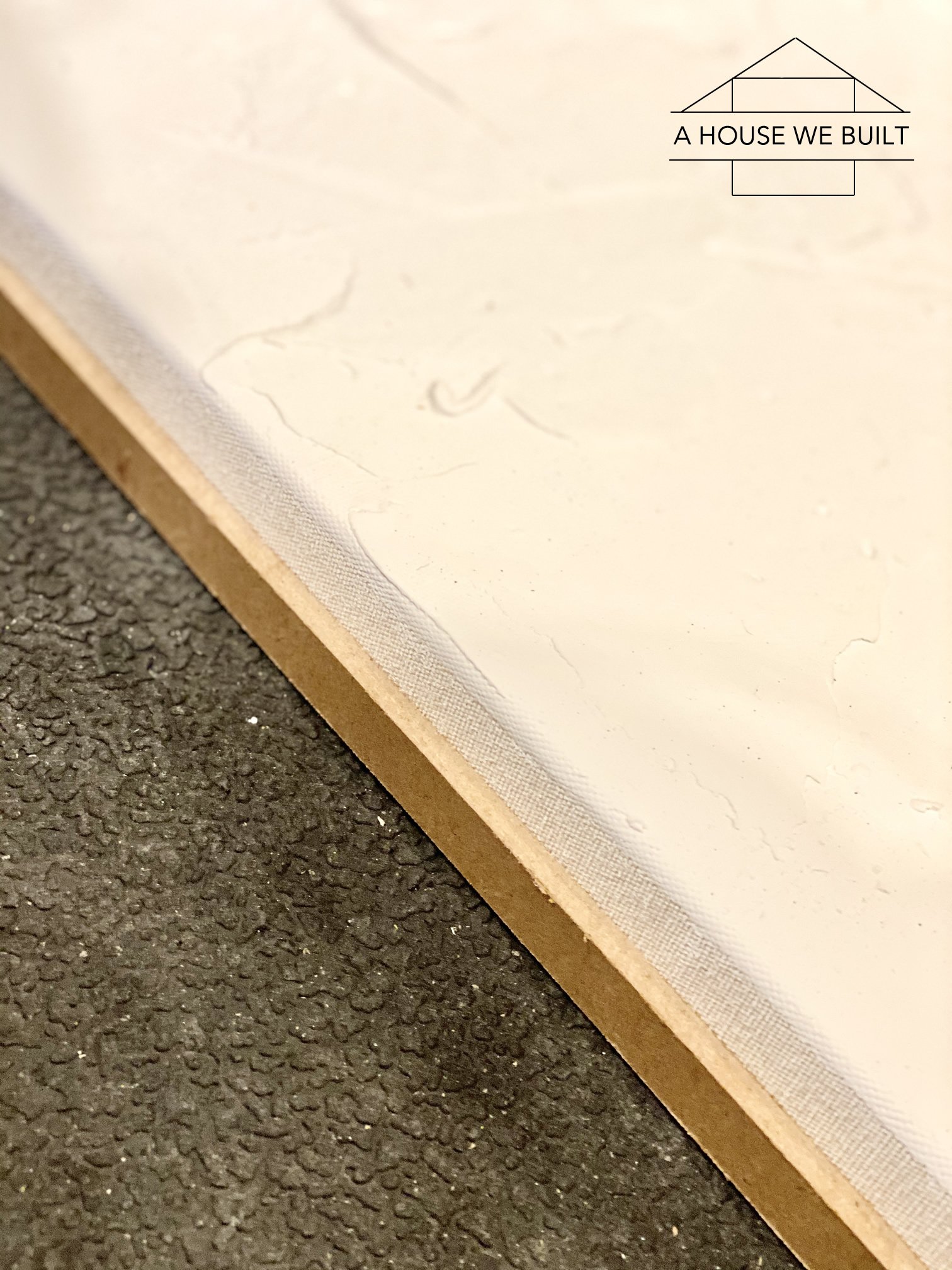
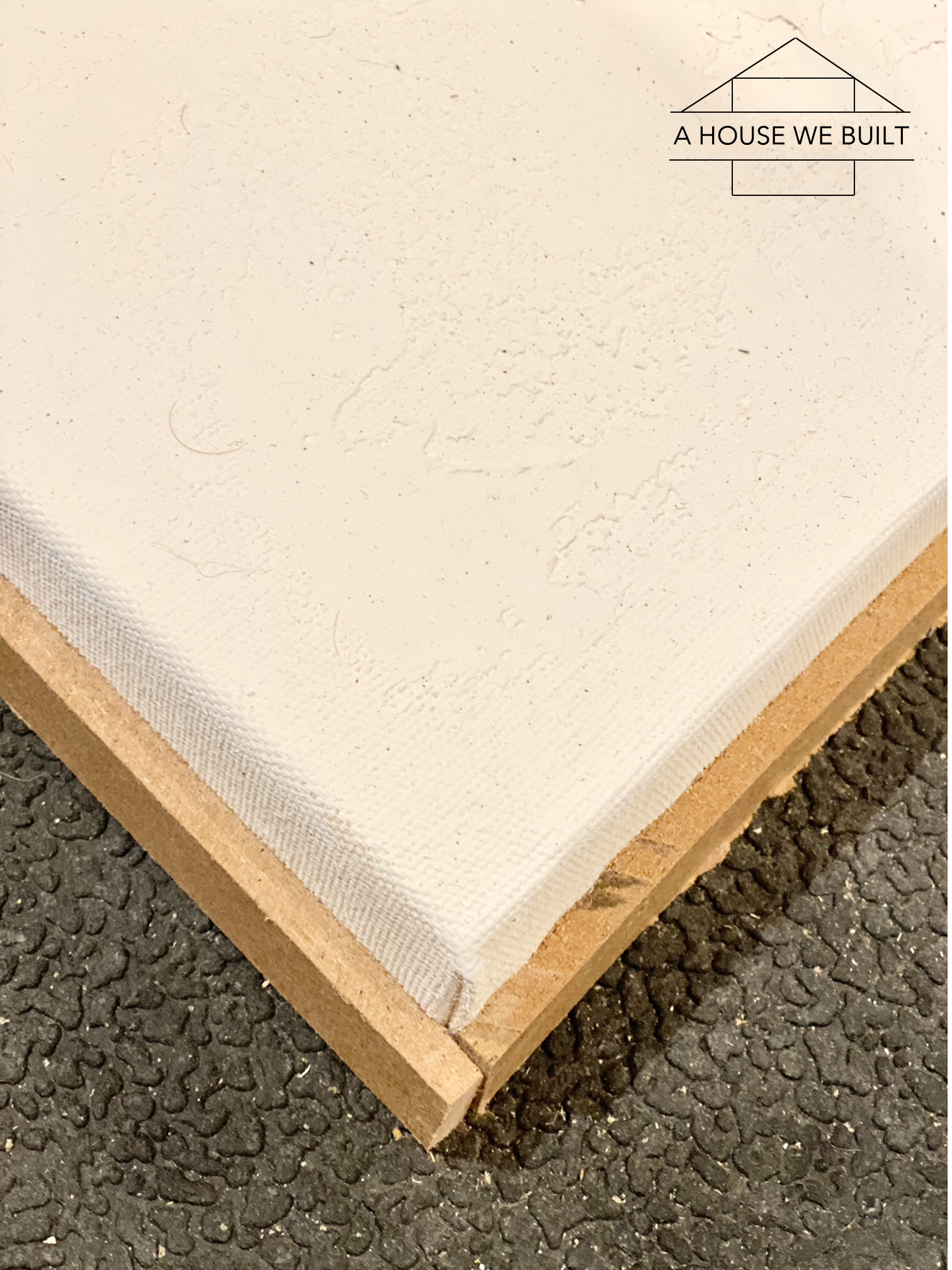
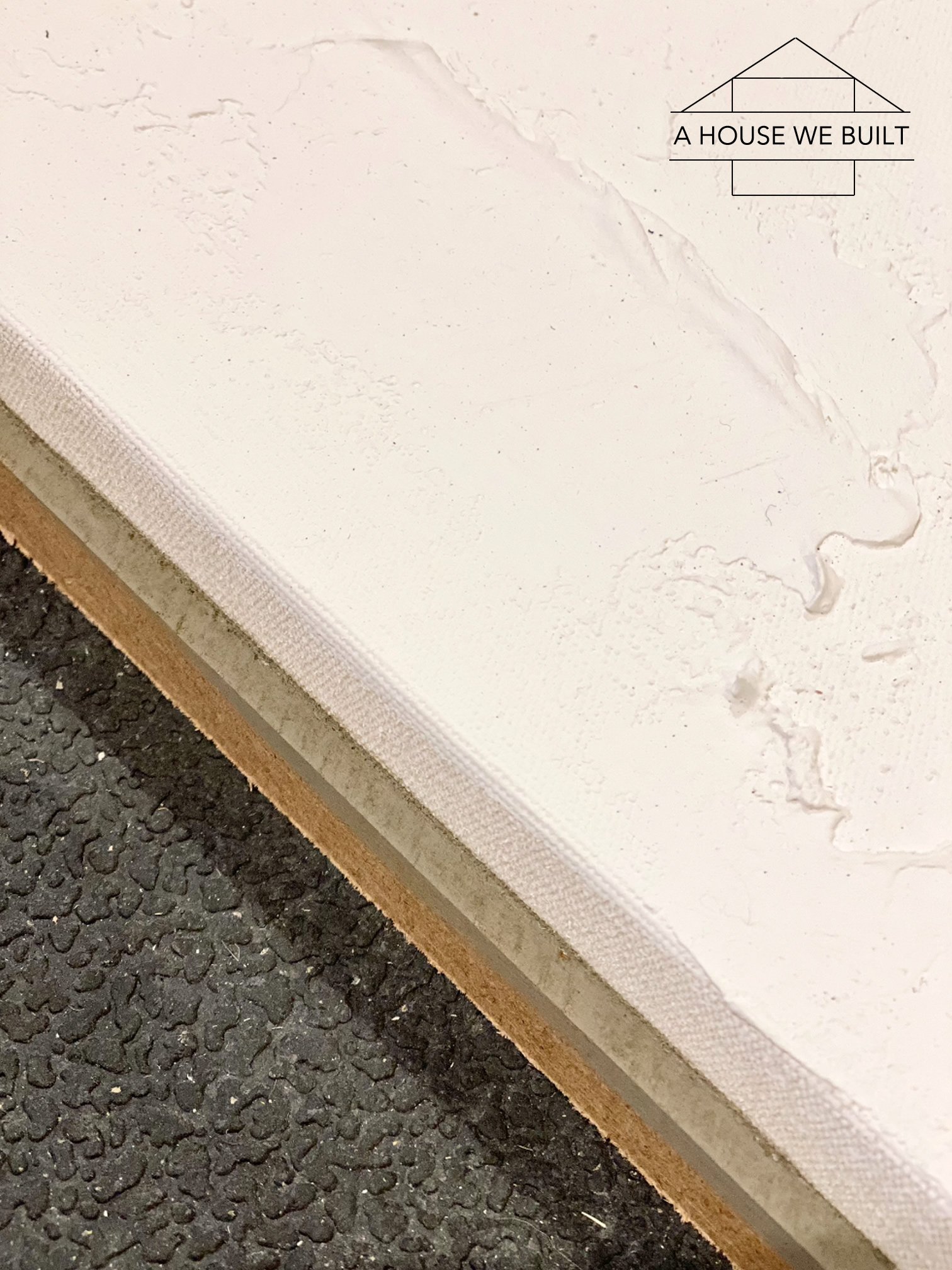
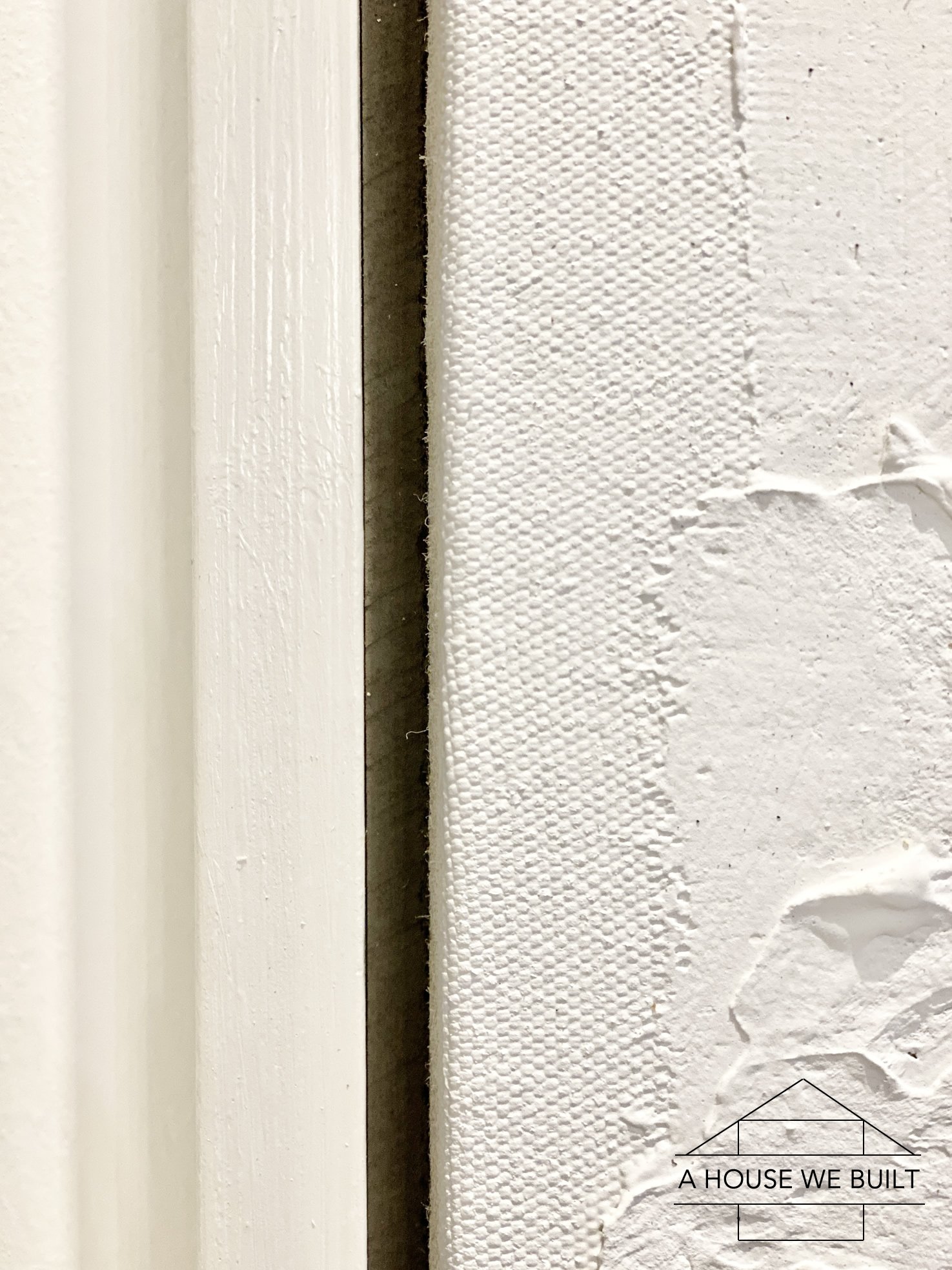
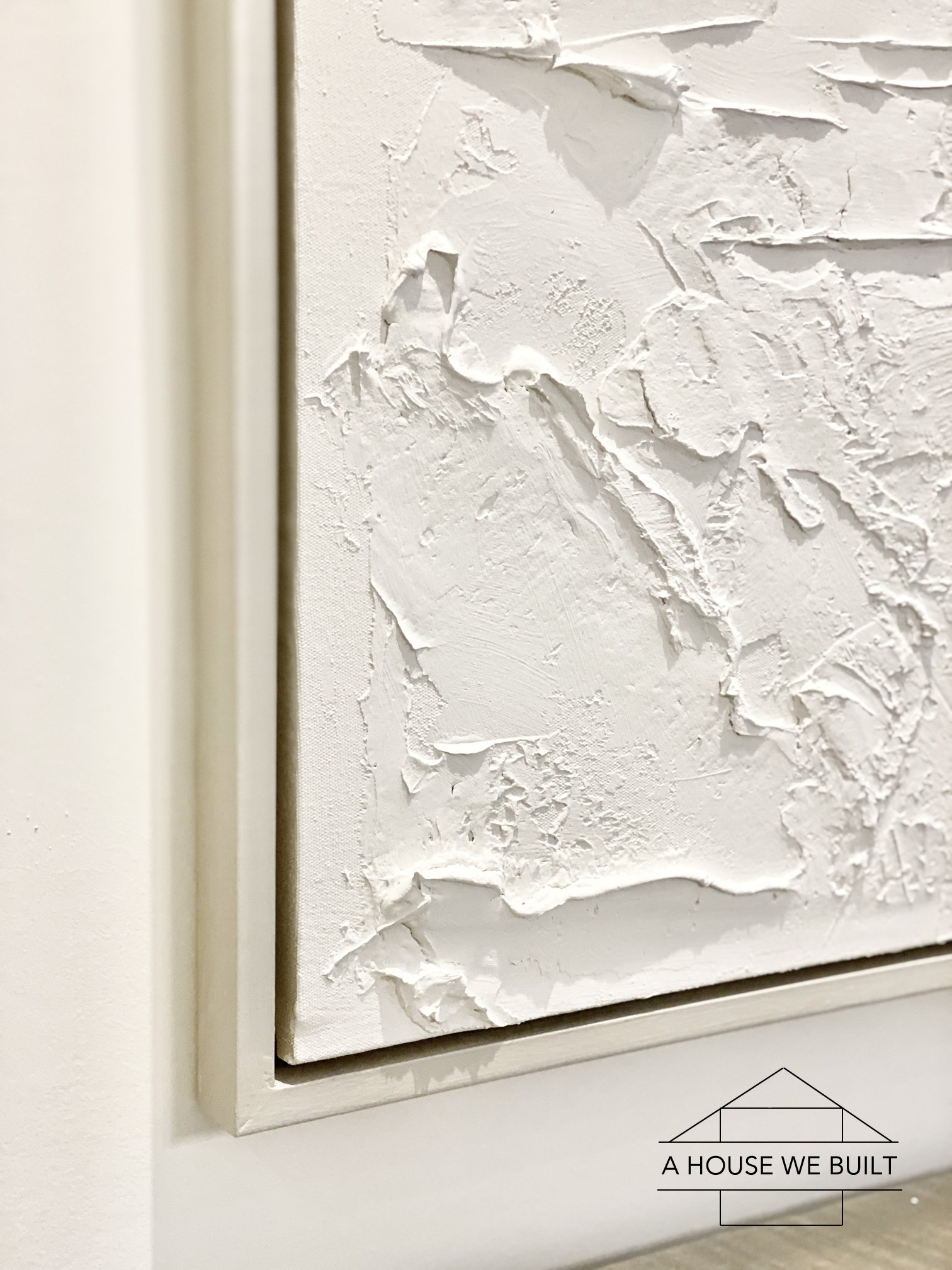

That's it! Now your art piece is ready to hang!
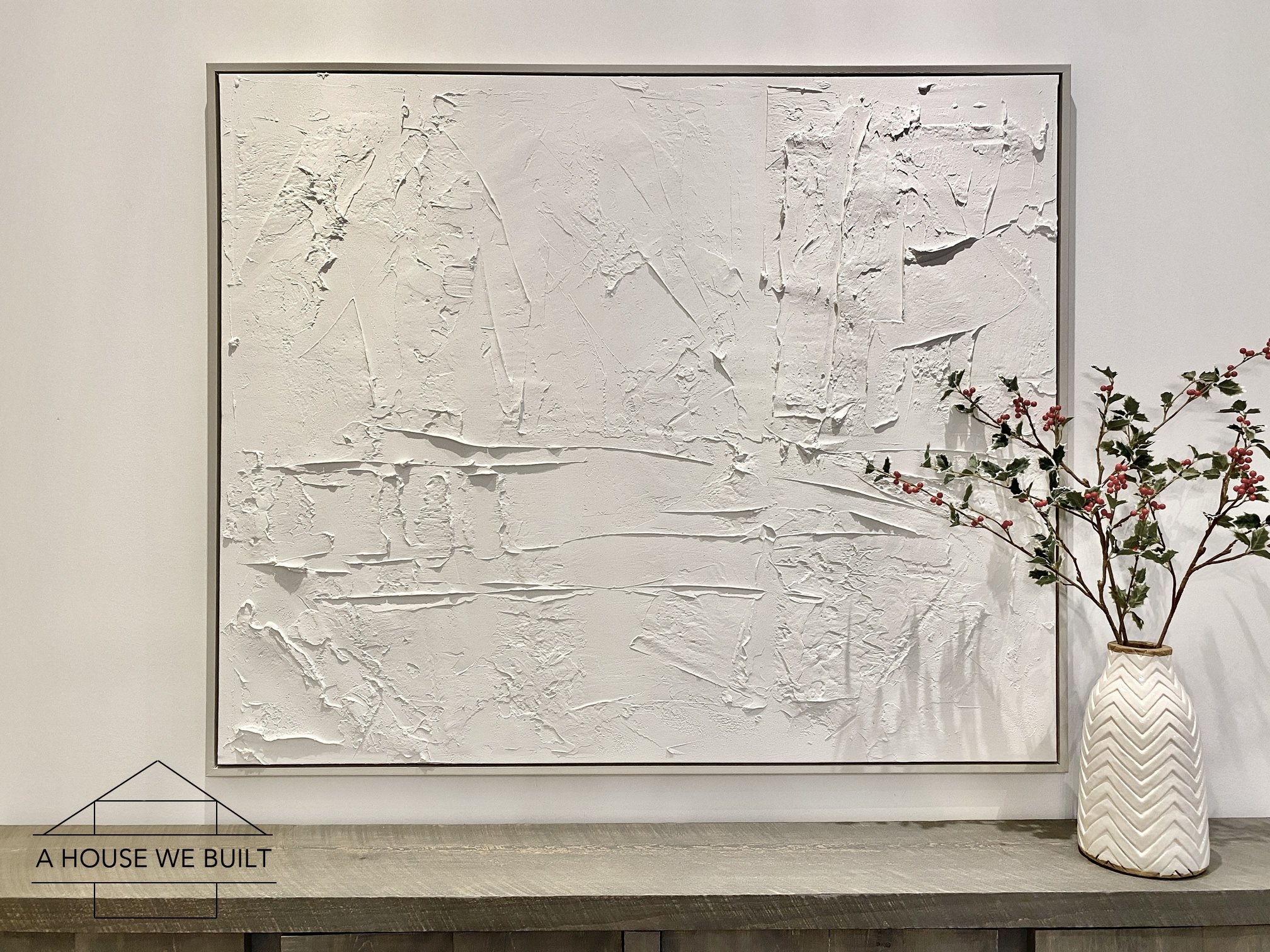
And if you're following us on Instagram and familiar with the layout of our dining room and you're wondering how on earth I got those straight pics of the art piece, I was sitting on our dining table lol! Finally, if you're wondering why these pics are a little darker than my other pics, I took these at night so there's no natural light so for those of you asking what our house looks like at night, this is an example.
SIMILAR OPTIONS
If you're not into DIY or just not feeling particularly artistic, here are similar art pieces you can buy ready-made: McGee & Co (rectangular) | McGee & Co (square) | Crate & Barrel | Anthropologie | Pottery Barn.
Other sources from these pics:
- Chevron vase: Crate & Barrel
- Holly stems: Pottery Barn
- Sideboard: Tutorial | Similar: Wayfair | Crate & Barrel
For more sources from our Dining Room, click here.
For more of our DIY tutorials, click here.
To explore the other rooms in our house, click here.
Reader Interactions
How To Make Canvas Art
Source: https://www.ahousewebuilt.com/textured-canvas-art/
Posted by: kennedymiltrared1985.blogspot.com

0 Response to "How To Make Canvas Art"
Post a Comment